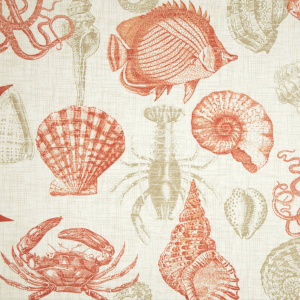Feathers are among the most fascinating and versatile structures in the animal kingdom. They serve as critical tools for survival, communication, and adaptation in birds, and their complex design has inspired innovations across science and technology. Understanding the science behind feathers not only reveals insights into avian biology but also demonstrates how nature’s ingenuity influences human creativity, from ancient adornments to modern video games.
2. The Structure and Composition of Feathers
3. Evolutionary Development of Feathers
4. Behavioral and Environmental Roles of Feathers
5. The Cultural and Technological Impact of Feathers
6. Modern Demonstrations in Interactive Media and Games
7. Feathers in Motion: Flight and Movement Mechanics
8. Nature and Technology: Biomimicry and Innovation
9. Feathers in Virtual Environments
10. Cultural and Scientific Implications
11. Conclusion
1. Introduction to the Science of Feathers: Exploring Their Biological and Functional Significance
Feathers are an extraordinary example of biological specialization. As unique integumentary structures exclusive to birds, they enable a wide range of functions essential for survival. From enabling flight to signaling social status, feathers exemplify nature’s capacity for adaptation. Their study links biological functions with broader themes in evolution, biomechanics, and even aesthetic design.
Overview of feathers as unique structures
Feathers consist of keratin, a durable protein also found in mammalian hair and nails. Their complex architecture includes barbs, barbules, and vane formations, which create lightweight yet strong surfaces. This intricate design allows feathers to perform multiple roles—from aerodynamic flight to thermal insulation.
Importance in survival and communication
Feathers are vital for thermoregulation, waterproofing, and camouflage. They also play central roles in courtship displays, where vibrant plumage attracts mates or signals dominance. For example, the elaborate tail feathers of peacocks serve as visual signals, illustrating how evolution favors traits that enhance reproductive success.
Linking biology to evolution and design
Studying feathers offers insights into the principles of natural selection and functional design. Their evolution reflects environmental pressures and adaptive responses, inspiring biomimetic innovations that mimic their lightweight, waterproof, and insulating qualities.
2. The Structure and Composition of Feathers: Anatomy and Material Science
A detailed understanding of feather anatomy reveals how their microscopic and material properties contribute to their functionality and inspire technological advances.
Microscopic anatomy
| Component | Function |
|---|---|
| Keratin | Provides strength and flexibility |
| Barbules | Interlock to create vane surface |
| Vane | Main surface aiding aerodynamics |
Material properties
- Lightweight: Enables efficient flight with minimal energy expenditure
- Waterproof: The microstructure repels water, maintaining buoyancy and insulation
- Insulating: Traps air to regulate body temperature
Implications for biomimicry
Engineers study feather microstructures to develop lightweight, waterproof materials for clothing, aircraft, and robotics. For instance, the structure of down feathers has inspired insulation technology, demonstrating how biological insights inform engineering solutions.
3. Evolutionary Development of Feathers: From Archosaurs to Modern Birds
Fossil evidence shows that feathers originated in non-avian dinosaurs, specifically within a group called archosaurs. Over millions of years, these structures evolved from simple filaments to complex flight feathers, driven by various environmental and reproductive pressures.
Fossil evidence
Discoveries such as Microraptor and Archaeopteryx reveal feather-like structures in early dinosaurs, indicating that feathers predate modern birds and originally served functions like insulation or display rather than flight.
Evolutionary pressures
Selective advantages, including thermoregulation, camouflage, and later, flight, shaped feather diversification. The transition from simple filamentous structures to the complex asymmetrical flight feathers exemplifies evolution’s innovation, enabling birds to conquer aerial niches.
From filaments to flight feathers
The evolution involved incremental modifications: increasing filament complexity, developing asymmetry for aerodynamics, and reinforcing structures for flight stability. This progression illustrates how small genetic changes can produce significant functional advancements over time.
4. Behavioral and Environmental Roles of Feathers in Birds
Feathers serve multiple ecological and behavioral functions, often tailored to specific environments and species needs.
Camouflage, display, and signaling
Brightly colored feathers, such as in parrots or hummingbirds, are used for attracting mates, while cryptic coloration helps ground-nesting birds evade predators. Social signals conveyed through plumage can indicate age, health, or reproductive status.
Thermoregulation and waterproofing
Feathers trap air to insulate against cold temperatures, while their microstructure repels water, critical for aquatic birds like ducks. These adaptations allow species to thrive in diverse habitats, from icy tundras to tropical wetlands.
Case studies of specialized adaptations
- Penguins: Dense, waterproof feathers combined with fat layers for insulation in icy waters
- Owls: Soft, fringed feathers for silent flight, aiding hunting in low-light conditions
5. The Cultural and Technological Impact of Feathers
Humans have long utilized feathers for practical and decorative purposes. Their aesthetic appeal and functional qualities have inspired technological innovations, illustrating a deep connection between natural forms and human culture.
Historical uses
Feathers have been used in clothing, ceremonial attire, and adornments across civilizations, from Native American headdresses to Asian fans. Their vibrant colors and textures symbolize status, spirituality, and beauty.
Modern technological applications
Inspired by feather microstructures, engineers have developed waterproof fabrics, lightweight composites, and aerodynamic surfaces. For example, the study of vane structures has influenced the design of more efficient aircraft wings.
Feathers in entertainment and design
Modern media, including video games, have incorporated feather-inspired elements to create realistic and engaging characters. The game I get it” in 10 mins showcases how biomimicry can be translated into playful, interactive experiences, illustrating how natural principles continue to inspire entertainment.
6. Modern Demonstrations of Feather Science in Interactive Media and Games
Video games like Chicken Road 2 exemplify the application of biological concepts, especially feather-inspired mechanics, to create realistic movement and engaging gameplay. These games serve as educational tools, demonstrating biomechanics in a fun, accessible way.
Feather-inspired movement mechanics
Games simulate the subtle flexing and aerodynamic properties of feathers, enabling characters or objects to glide, navigate obstacles, or land softly. Such mechanics are rooted in real physics, making gameplay both entertaining and educational.
Role of game design in education
Interactive media helps players understand complex biomechanical principles. For instance, crossing obstacles in Chicken Road 2 can mirror how birds adjust feather positions during flight, subtly teaching players about natural flight mechanics.
Historical influence
The concept of safe crossing, exemplified by the zebra crossing introduced in 1949, influences pedestrian game design, encouraging safe navigation—paralleling how birds use feathers to optimize flight paths.
7. Feathers in Motion: Physics and Mechanics of Flight and Movement
Understanding how feathers function during flight reveals complex aerodynamics. The flexibility, orientation, and structural design of feathers contribute to efficient lift, thrust, and maneuverability.
Aerodynamics of feathers
Feathers generate lift through their shape and arrangement, with asymmetrical vanes providing aerodynamic stability. During gliding, bird wings adjust feather angles to control speed and direction, an insight now incorporated into drone and aircraft design.
Structural flexibility
Feather flexibility allows for fine adjustments during flight, reducing drag and optimizing energy use. This principle inspires flexible wing designs in robotics and aircraft wings, enhancing efficiency and agility.
Game analogy
In Chicken Road 2, characters’ movements mimic these principles, flexing and adjusting to navigate obstacles smoothly. This parallel underscores how understanding biological motion informs entertainment technology.
8. The Intersection of Nature and Technology: Biomimicry and Innovation
Studying feathers has led to breakthroughs in robotics, materials science, and flight technology. Biomimicry—design inspired by nature—bridges biology and engineering, resulting in innovative applications.
Advances in robotics and flight technology
Robotic birds and drones mimic feather microstructures to achieve flight efficiency and stability. For example, flexible wing surfaces inspired by feather flexibility enable drones to adapt dynamically to airflow conditions.
Examples of biomimicry
- Transportation: High-speed trains inspired by the shape of kingfisher beaks to reduce noise and improve aerodynamics.
- Materials: Waterproof fabrics modeled after the microstructure of water-repellent feathers.
Interdisciplinary research
Collaborations among biologists, engineers, and designers foster innovations that improve our daily lives, demonstrating how studying natural phenomena like feathers accelerates technological progress.
9. Deep Dive: The Role of Feathers in Modern Gaming and Virtual Environments
In virtual worlds, feather-inspired mechanics enhance realism and user engagement. Visual cues like the zebra crossing exemplify how design elements influence user experience, whether in physical environments or digital simulations.
Enhancing realism and engagement
Game developers incorporate feather movement physics to create believable flight or gliding characters, making interactions more intuitive and immersive.
Visual cues and user experience
Elements rooted in natural principles, such as crossing paths or obstacle avoidance, improve navigation and safety in games, paralleling how birds use feathers to optimize flight paths.
Case study: Chicken Road 2
As a modern illustration, I get it” in 10 mins demonstrates how biological concepts like feather flexibility and aerodynamics can be translated into playful, educational experiences—highlighting the enduring relevance of natural science in entertainment.
10. Broader Cultural and Scientific Implications: From Roosters to Digital Avatars
Perceptions of feathers influence scientific research and technological design. Culturally, feathers symbolize beauty and status, which continues to inspire innovation in digital representations and virtual environments.
Cultural influence on research and design
Historical and contemporary aesthetics, such as fashion and art, draw from feather motifs, fostering a deeper appreciation for their biological complexity.
Evolution to digital representations
Feather-inspired visuals now appear in animation, gaming, and virtual reality, where their intricate structures inform realistic rendering and movement, blurring the lines between biology and digital art.
Future directions
Emerging technologies in augmented reality aim to incorporate biological insights into immersive experiences, promising a future where natural phenomena like feathers become integral to virtual worlds.</




